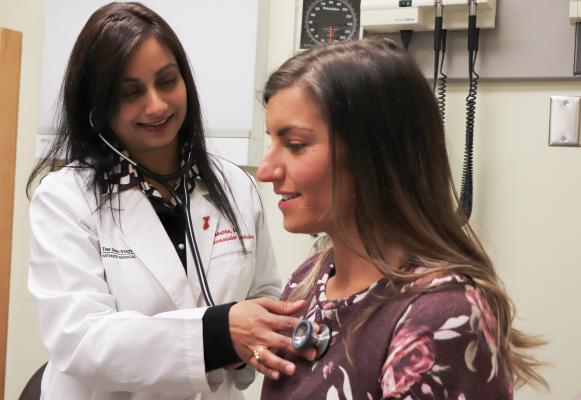
August 7, 2018 — While heart failure is an uncommon complication of breast cancer treatment, the risk is higher in patients treated with certain types of chemotherapy and lower in younger patients, according to a study in a special "Imaging in Cardio-oncology" issue of JACC: Cardiovascular Imaging. Researchers concluded that cardiac monitoring should be a higher priority for high-risk patients.
Cardiovascular disease is the second leading cause of death of breast cancer survivors, behind secondary malignancies, due in part to the cardiac toxicities of some cancer therapies. However, little is known about the rate of chemotherapy-related cardiotoxicity and the rate of cardiac monitoring adherence among breast cancer patients treated with chemotherapy.
In this study, cardiotoxicity was defined as an incident case of heart failure following a breast cancer diagnosis. The study included 16,456 patients with a median age of 56 years who were treated with chemotherapy within six months of their diagnosis. Of those, 4,325 patients received trastuzumab-based chemotherapy.
Trastuzumab-based chemotherapy is a common treatment for patients with HER2-positive breast cancer, a very aggressive type of cancer. It has consistently been shown to benefit patients, but it is also associated with cardiotoxicity.
The study found that 8.3 percent of the trastuzumab-treated patients developed heart failure versus 2.7 percent of patients who did not receive trastuzumab. Among patients who were treated with trastuzumab, 46.2 percent received guideline-adherent cardiac monitoring, which according to the National Comprehensive Cancer Network, is before initiating treatment and every three months while on the treatment. Researched also saw that as age increased, there was a consistent increase in the risk of heart failure.
This was the first study of its kind to estimate cardiotoxicity rates and cardiac monitoring using data on both younger and older women from the MarketScan database. Previous studies focused on older women who have higher rates of heart failure than reported in clinical trials; this study focused more on younger women, who usually have fewer comorbidities and are similar to patients in previous trastuzumab trials. Younger women may receive more aggressive chemotherapy because they have a longer life expectancy, making them an important group to study for cardiac toxicity and cardiac monitoring.
Researchers said there could be many explanations for the low rates of cardiac monitoring seen in the patients treated with trastuzumab, including a low perceived need on the part of the physicians, rather than an unawareness of the guidelines.
"We must remember that while cardiac monitoring is recommended in different guidelines, such recommendations are not based on category 1 data, and the timing recommended, and the intervals of testing are rather arbitrary," said Mariana L. Henry, lead author of the study and a graduate student at Yale School of Public Health. "In examining the rate of both cardiac monitoring and cardiotoxicity we could begin to address the controversial issue of whether cardiac monitoring is warranted in young breast cancer patients."
This study is one of several papers featured in a special issue dedicated to imaging in cardio-oncology. Other studies/papers include:
- Radiation Associated Cardiac Disease: a practical approach to diagnosis and management;
- Anthracycline Therapy Is Associated With Cardiomyocyte Atrophy and Preclinical Manifestations of Heart Disease; and
- Contemporary Role of Echocardiography for Clinical Decision Making in Patients During and After Cancer Therapy.
For more information: www.imaging.onlinejacc.org
Reference


 April 17, 2024
April 17, 2024 








